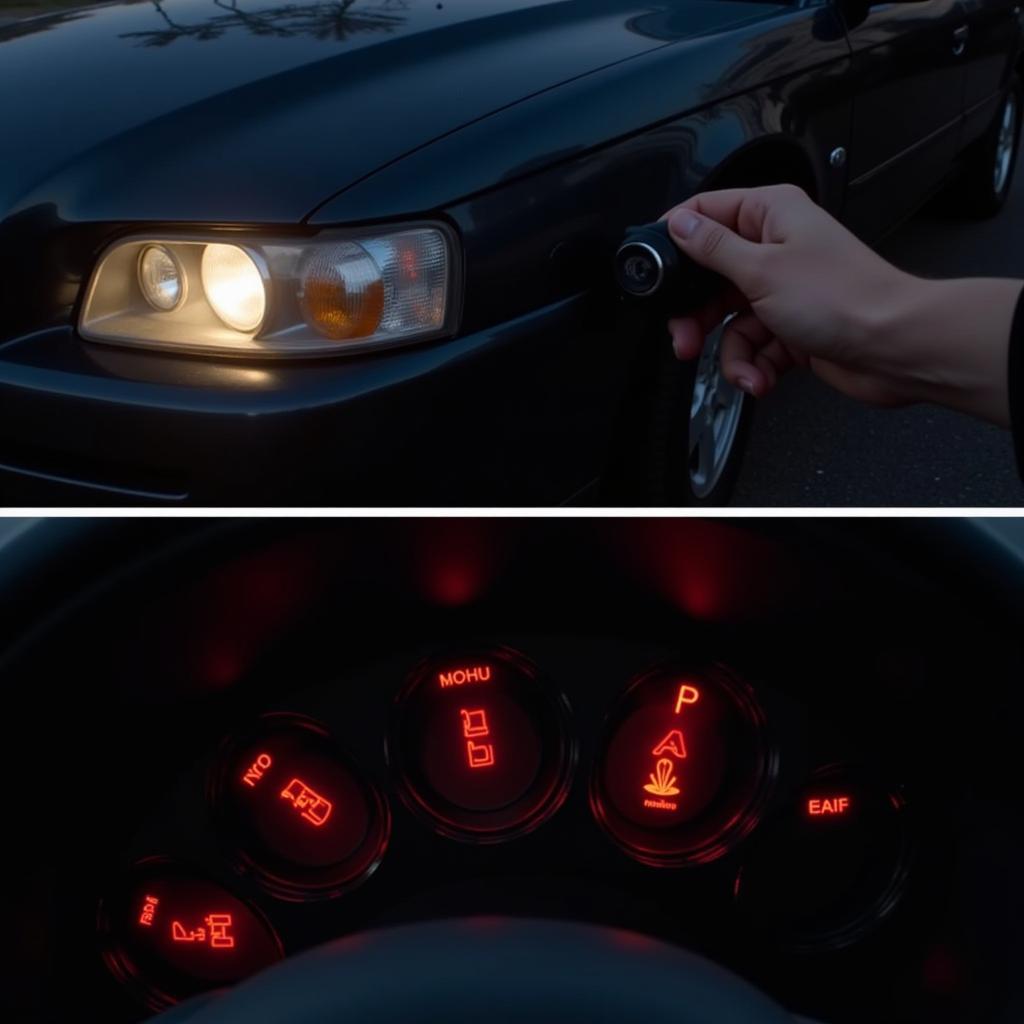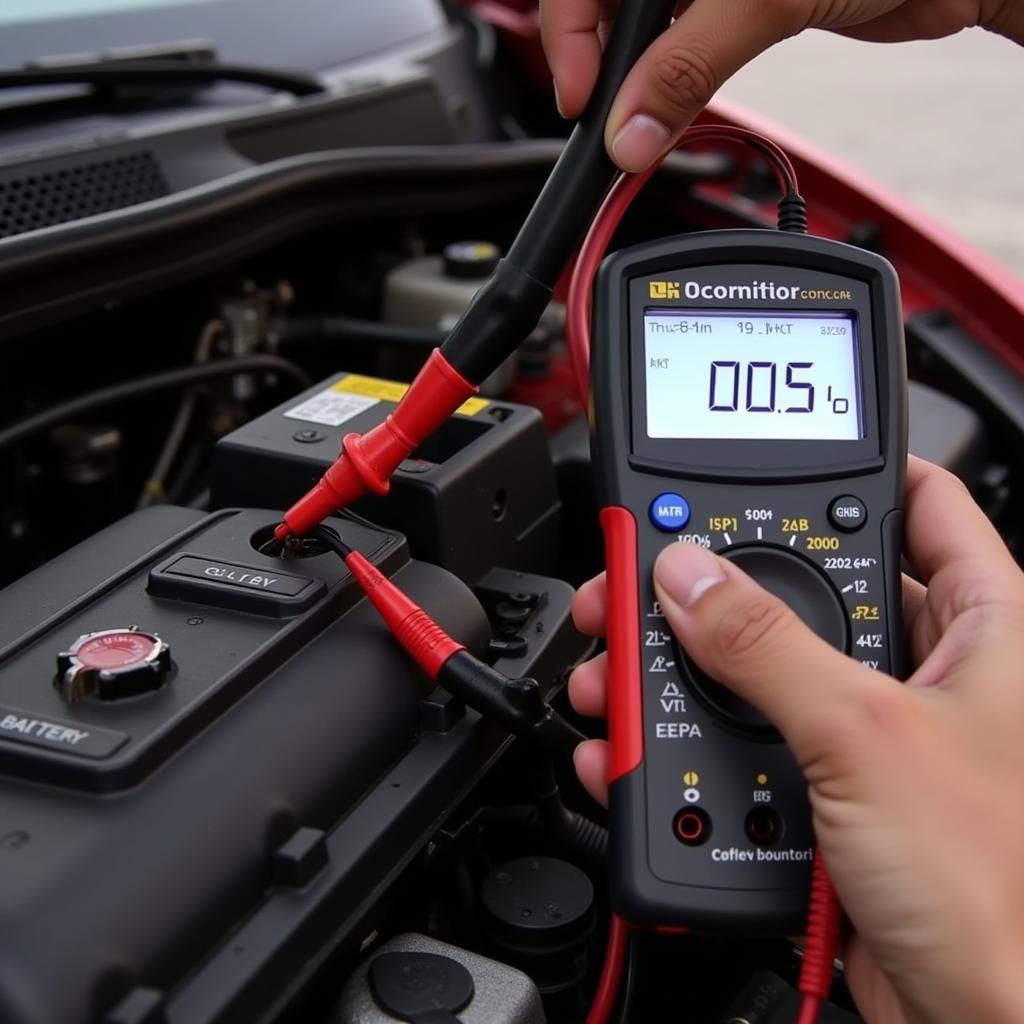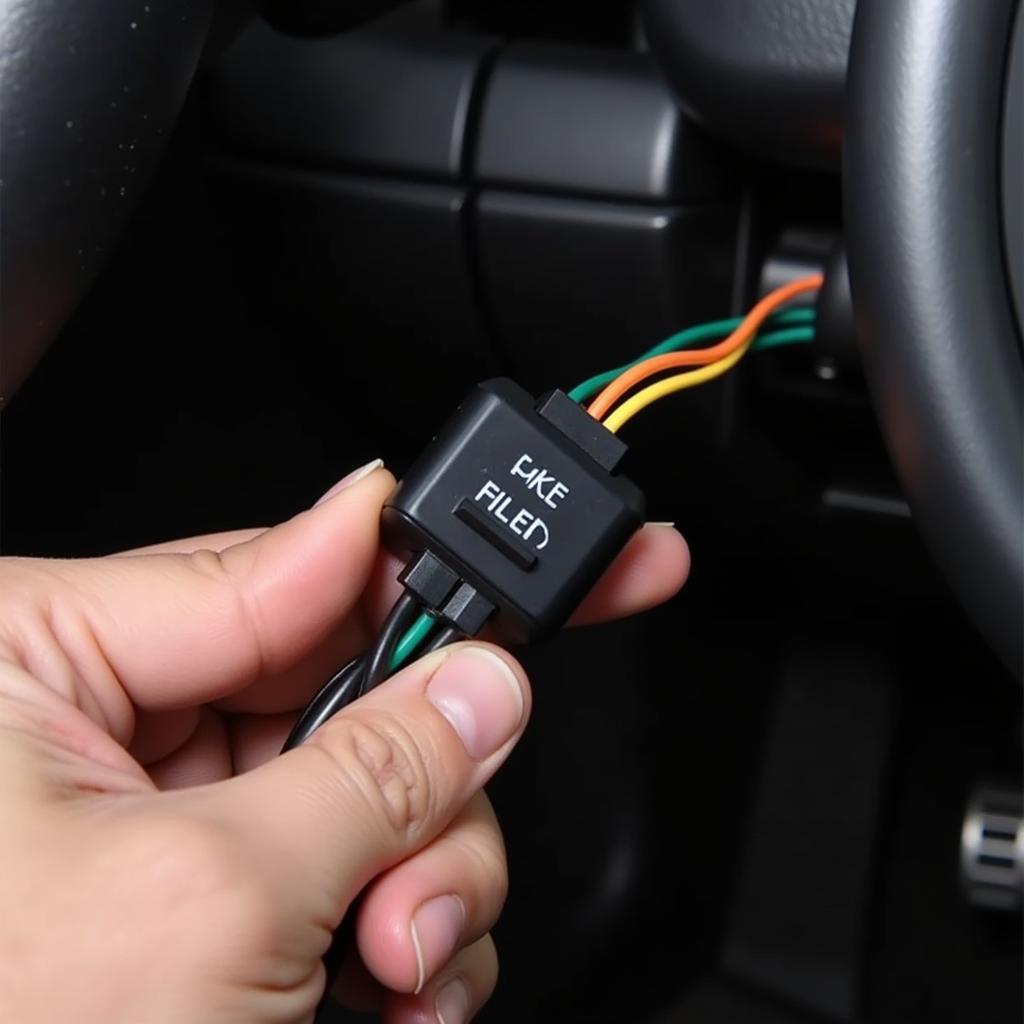A dead battery is a common culprit behind vehicle breakdowns, leaving drivers stranded and frustrated. Recognizing the sign of a dead battery is crucial for timely intervention and prevents unexpected disruptions to your journey. This guide will walk you through various indicators of a failing car battery, equipping you with the knowledge to diagnose the problem and explore potential solutions.
Common Signs of a Dead Car Battery
Experiencing a dead battery can be inconvenient, but knowing the signs can help you address the issue proactively. Here are some common indicators:
- Slow Engine Crank: This is often the first and most noticeable sign of a dead battery. When you turn the key, the engine cranks slowly or struggles to turn over.
- Dim Headlights: A weakening battery may struggle to power the headlights, resulting in dimmer than usual lights, especially when the engine isn’t running.
- Clicking Sound When Turning the Key: If you hear a rapid clicking sound when you try to start the car, it often indicates that the battery doesn’t have enough power to engage the starter motor.
- Dashboard Warning Lights: Modern cars often display a battery warning light on the dashboard, signaling a potential problem with the charging system or the battery itself.
- Electrical Malfunctions: A dying battery may cause erratic behavior in various electrical components, such as the radio, power windows, and interior lights.
- Swollen Battery Case: Extreme temperatures can cause the battery case to swell or bulge, a clear sign of internal damage and a need for replacement.
- Rotten Egg Smell: A damaged battery may emit a sulfurous odor, indicating a leak or internal short circuit.
 Dead Car Battery Symptoms: Dim Headlights, Slow Crank, Clicking Sounds
Dead Car Battery Symptoms: Dim Headlights, Slow Crank, Clicking Sounds
Diagnosing a Dead Battery
Confirming a dead battery requires a systematic approach. Here’s how you can diagnose the problem:
- Visual Inspection: Check the battery terminals for corrosion or loose connections. Clean the terminals with a wire brush and baking soda solution if necessary.
- Battery Testing: Use a multimeter or a battery tester to measure the battery voltage. A fully charged battery should read around 12.6 volts.
- Load Test: A load test simulates the strain placed on the battery during starting. A failing battery will show a significant voltage drop under load.
- Alternator Check: Ensure the alternator is functioning correctly, as a faulty alternator can prevent the battery from charging properly.
 Testing Car Battery with Multimeter
Testing Car Battery with Multimeter
Troubleshooting and Solutions for a Dead Battery
Addressing a dead battery involves several options, depending on the underlying cause:
- Jump Starting: Using jumper cables and another vehicle can provide a temporary boost to start your car.
- Battery Charging: A dedicated battery charger can restore a depleted battery to its full charge.
- Battery Replacement: If the battery is old or damaged, replacement is the most effective solution.
- Alternator Repair/Replacement: If the alternator is faulty, repairing or replacing it will prevent future battery issues.
What Causes a Car Battery to Die?
Several factors can contribute to a dead battery:
- Age: Batteries have a limited lifespan, typically 3-5 years.
- Extreme Temperatures: Both hot and cold weather can accelerate battery degradation.
- Parasitic Drain: Electrical components drawing power even when the car is off can drain the battery over time.
- Short Trips: Frequent short trips may not allow sufficient time for the alternator to fully recharge the battery.
- Faulty Alternator: A malfunctioning alternator prevents the battery from charging while the engine is running.
“A common mistake people make is ignoring early signs of a failing battery,” says John Smith, Automotive Electrical Engineer at AutoTech Solutions. “Regular battery maintenance and timely replacement can prevent unexpected breakdowns.”
“Investing in a quality battery and maintaining proper charging system function are crucial for long-term vehicle reliability,” adds Jane Doe, Lead Technician at Advanced Auto Diagnostics.
Conclusion
Recognizing the sign of a dead battery is essential for every car owner. By understanding the symptoms, diagnostic procedures, and solutions, you can avoid the inconvenience and frustration of a dead battery. Proactive maintenance and addressing the underlying causes will ensure your vehicle starts reliably every time. Don’t wait until you’re stranded; empower yourself with the knowledge to handle this common car problem effectively.



